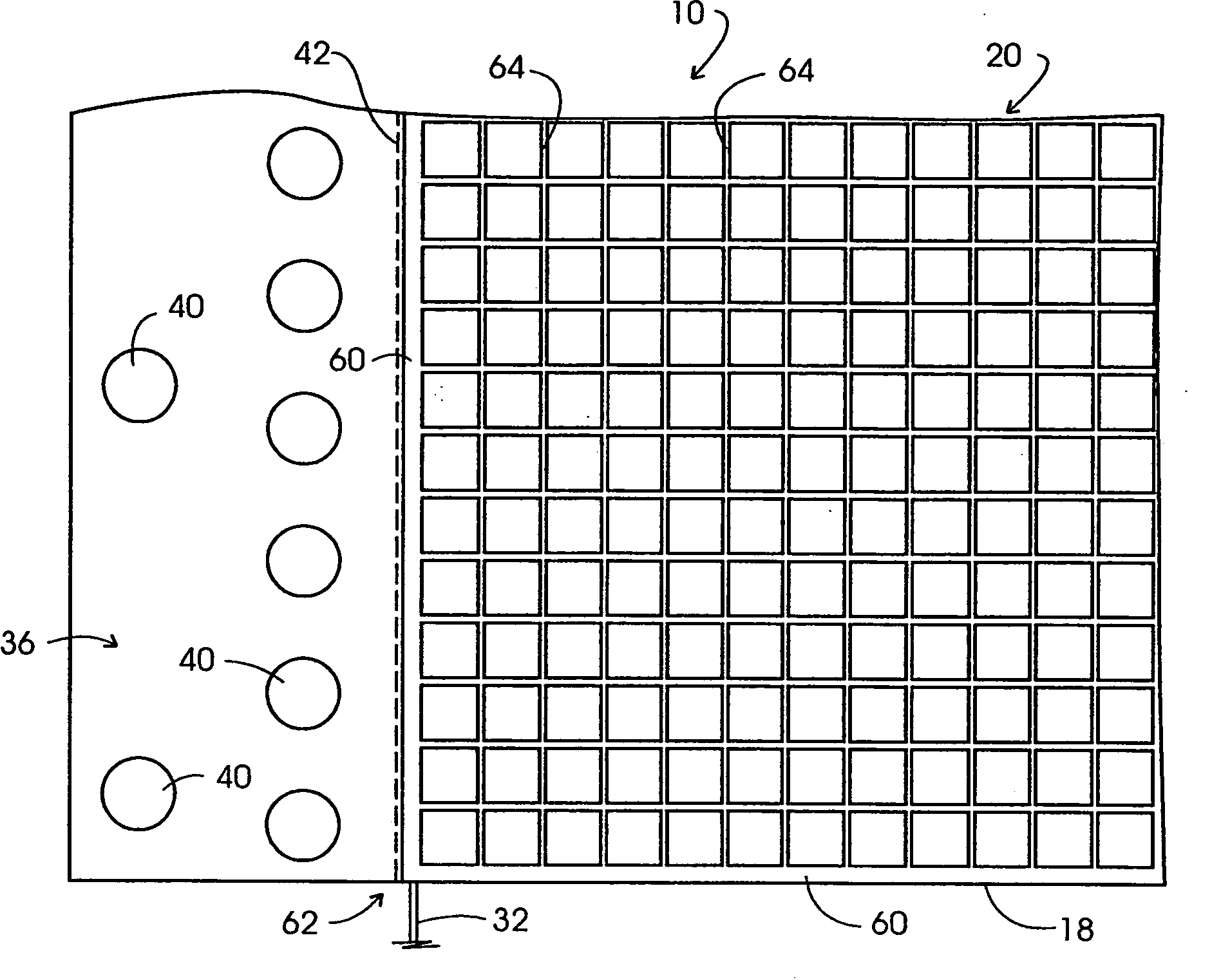Solar panels with liquid superconcentrators exhibiting wide fields of view
- Summary
- Abstract
- Description
- Claims
- Application Information
AI Technical Summary
Benefits of technology
Problems solved by technology
Method used
Image
Examples
Embodiment Construction
[0060] In the discourse to follow the general structure of each panel of the conversion system as it is developed during manufacture is described, whereupon the array of liquid-filled superconcentrator components is set forth. Next, the generally rectangular back support with its lattice form of construction and frame is addressed. The superconcentrator optical cells may be arranged in a variety of matrixes and such variations in the arrays with respect to the cross-sectional shape of the optical elements are discussed. The optical elements further employ the spectral cooling features described in application for U.S. patent Ser. No. 10 / 656,710 (supra). That feature is revisited in conjunction with two Planck curves, whereupon the practical interconnection and transportation of the relatively light panels is discussed along with an illustration of linear panel arrays which may combine to have a length, for example, of about one mile when installed on terrain. Various terrain install...
PUM
 Login to View More
Login to View More Abstract
Description
Claims
Application Information
 Login to View More
Login to View More - R&D
- Intellectual Property
- Life Sciences
- Materials
- Tech Scout
- Unparalleled Data Quality
- Higher Quality Content
- 60% Fewer Hallucinations
Browse by: Latest US Patents, China's latest patents, Technical Efficacy Thesaurus, Application Domain, Technology Topic, Popular Technical Reports.
© 2025 PatSnap. All rights reserved.Legal|Privacy policy|Modern Slavery Act Transparency Statement|Sitemap|About US| Contact US: help@patsnap.com



